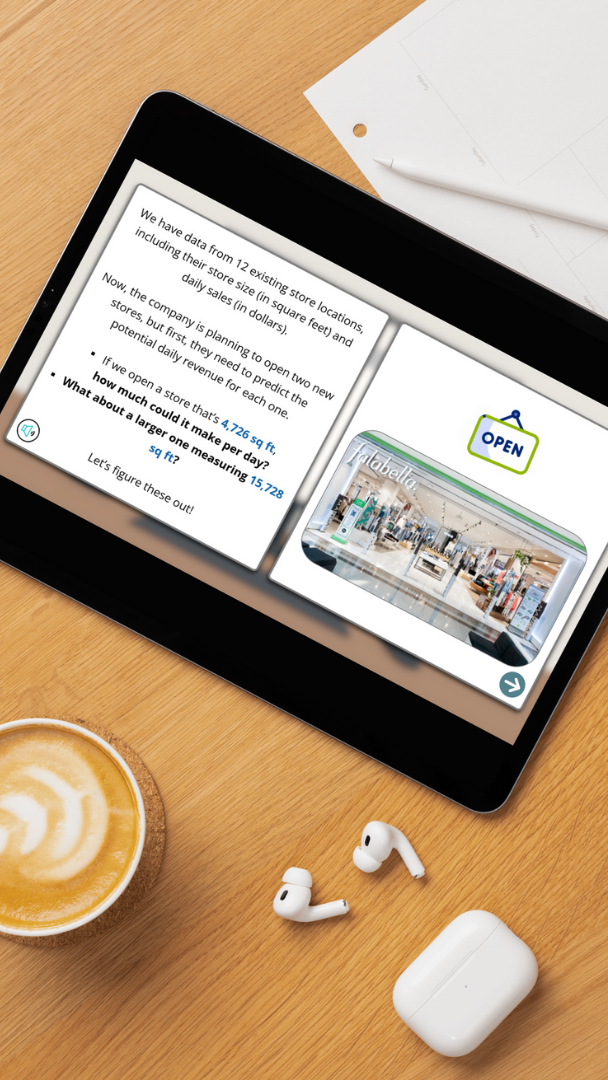Featured Project
Predicting Store Sales Using Excel Scatter Charts
I designed this scenario-based eLearning project for newly onboarded interns at a Consulting company to practice data analysis and sales forecasting skills using real-world business challenges.
Take a look by clicking the button below!

Overview
Client/Context: This scenario-based training guide was designed to teach business interns how to forecast store sales using Excel scatter charts. It showcases my ability to create interactive eLearning aligned with real-world objectives.
Audience: New interns at a consulting group company.
Responsibilities: Instructional Design, eLearning Development, Visual Design, Scenario Writing, Sound Design.
Tools Used: Articulate Storyline 360, Microsoft Excel, Power Point, ScreenToGif, Canva, Flaticon, Pixabay, ChatGPT (For AI image creation).
Business Scenario:
Falabella Expansion Proposal
Falabella, a leading Chilean retail company, is evaluating the feasibility of opening two new store locations. To support this business decision, the intern must analyze data from 12 existing stores, which includes each store’s square footage and corresponding daily sales in USD.
The intern is expected to use Microsoft Excel to:
- Input and organize the provided data
- Create a scatter chart to visualize the relationship between store size and daily sales
- Add a trendline to the chart
- Apply the trendline’s equation to predict the potential daily revenue for the two proposed store locations
The intern will use Excel tools to uncover the relationship between store size and daily sales, supporting the company in making a data-informed decision about expansion.

Instructional Design Approach
To develop this training, I combined elements from both the ADDIE and SAM models to ensure structure and flexibility.
1. ADDIE Model Application
• Analyze: Identified the learning need which is basic Excel forecasting for new sales consultants or interns in a business context.
• Design: Outlined a step-by-step Excel process using real data, tied to learning outcomes.
• Develop: Created the interactive guide in Articulate Storyline 360, including knowledge checks and branching scenarios.
• Implement: Designed for asynchronous delivery on an LMS or internal training hub.
• Evaluate: Included embedded assessment exercises and data tracking to measure learning effectiveness.
2. SAM (Successive Approximation Model) Application
• Preparation Phase: Defined learner personas (interns/new analysts), use case, and success metrics (accurate predictions, engagement).
• Iterative Design: Rapid prototyping was used to test layout and interaction styles; adjustments made based on feedback.
• Development Phase: Finalized with layered visuals, real Excel data, and scenario based tasks to simulate decision-making.
Using SAM ensured agility, while ADDIE brought clarity and alignment to the overall design.
